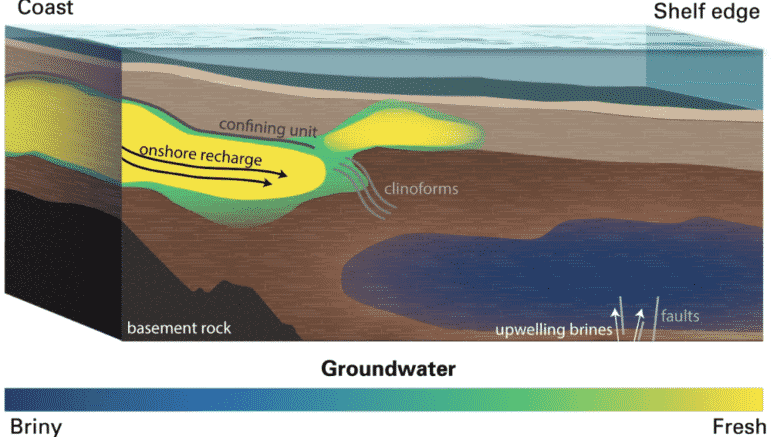Massive Water Aquifers Discovered Under The Ocean

There has never been a global shortage of water, but geologists have discovered virtually unlimited near-fresh aquifers underneath the oceans. One such structure off the East Coast contains more than 2.8 trillion tons of water.
The United Nations states that “Water scarcity already affects every continent,” and of course, the shortage is blamed on global warming. Instead of creating artificial shortages, mankind should be thanking the earth for its abundance of resources. ⁃ TN Editor
Low-salinity submarine groundwater contained within continental shelves is a global phenomenon. While low-salinity groundwater is thought to be abundant, its distribution and volume worldwide is poorly understood due to the limited number of observations.
Researchers have imaged laterally continuous aquifers extending 90 km offshore New Jersey and Martha’s Vineyard, Massachusetts, on the U.S. Atlantic margin using new shallow water electromagnetic geophysical methods. They identified clinoforms as a previously unknown structural control on the lateral extent of low-salinity groundwater and potentially a control on where low-salinity water rises into the seafloor.
The data suggest a continuous submarine aquifer system spans at least 350 km of the U.S. Atlantic coast and contains about 2800 km3 (2.8 trillion tons) of low-salinity groundwater. The findings can be used to improve models of past glacial, eustatic, tectonic, and geomorphic processes on continental shelves and provide insight into shelf geochemistry, biogeochemical cycles, and the deep biosphere.
This could be a significant resource with potential for future offshore groundwater production. Given the 90 km offshore extent, 350 km distance between profiles, about 200 m thickness and 45% average porosity, we estimate the aquifer system contains at least 2800 km3 of water with salinity less than 15. If we consider the potential northeast and southwest extensions beyond our profiles, there may be several times more groundwater underlying the northeast portion of the U.S. Atlantic continental shelf, representing a freshwater resource that rivals the largest onshore aquifers. Utilization of such groundwater would require desalinization and effects such as upconing should be considered prior to extraction.


No comments:
Post a Comment